Crow: A Common Bird Found Worldwide
Crows are one of the most common birds found worldwide. They belong to the Corvidae family, which contains over 120 bird species, including ravens, magpies, and jays. Crows have a distinct appearance, with all-black feathers, long beaks, and sharp talons. They are also known for their intelligence and adaptability, making them successful in various environments.
One of the main features of a crow is its size. They are medium-sized birds, usually around 17 to 21 inches in length, with a wingspan of approximately three feet. Their feathers are entirely black, sometimes with a hint of blue or purple when hit by the light. Crows also have a unique fan-shaped tail that helps them balance when perching on branches.
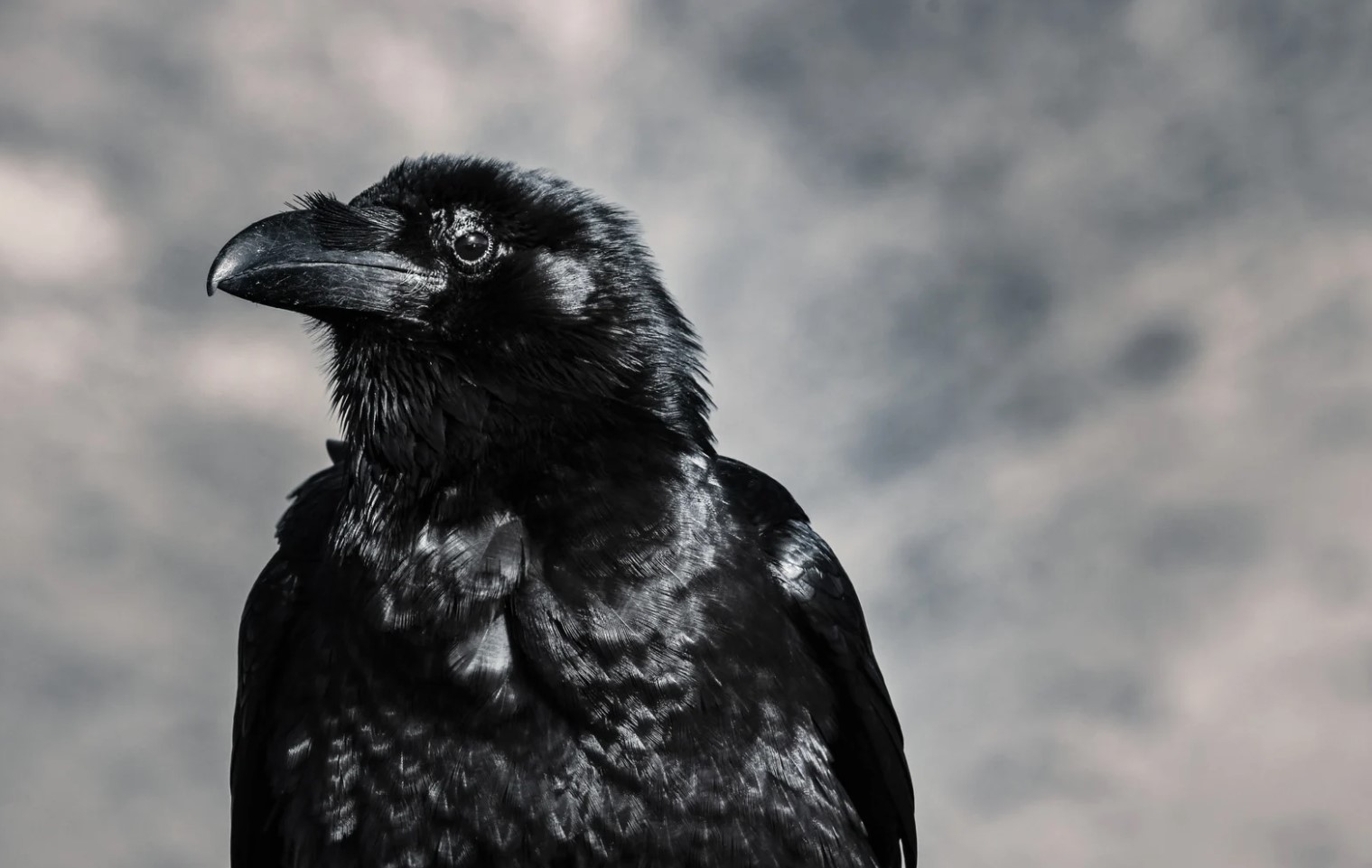
There are many types of crows around the world, including the American crow, European crow, and Hooded crow. The American crow is the most common species in North America and can be found in various habitats, such as forests, urban areas, and agricultural lands. The European crow, on the other hand, prefers wooded areas and is prevalent in Europe, Asia, and parts of North Africa. The Hooded crow is mostly found in northern and eastern Europe, as well as western Asia.
| Type of Crow | Location |
|---|---|
| American Crow | North America |
| European Crow | Europe, Asia, North Africa |
| Hooded Crow | East Europe, West Asia |
- Crow Habitat: Crows adapt to various habitats, including forests, open areas, and urban environments. They prefer to nest in trees or high structures.
- Crow Diet: Crows are primarily omnivores, eating insects, small animals, fruits, seeds, and even garbage.
- Crow Behavior: Crows are social birds that form large groups or families. They are intelligent and can recognize individual humans, solve problems, and use tools.
- Crow Conservation: Although crows are not endangered, they face threats from habitat loss, pollution, and disease. Conservation efforts focus on preserving natural habitats and reducing pollution and other human activities that harm crow populations.
In conclusion, crows are fascinating birds found worldwide. They have unique features and characteristics that make them stand out from other bird species. Understanding their behavior, habitat, and diet can help us appreciate them better and contribute to their conservation efforts.
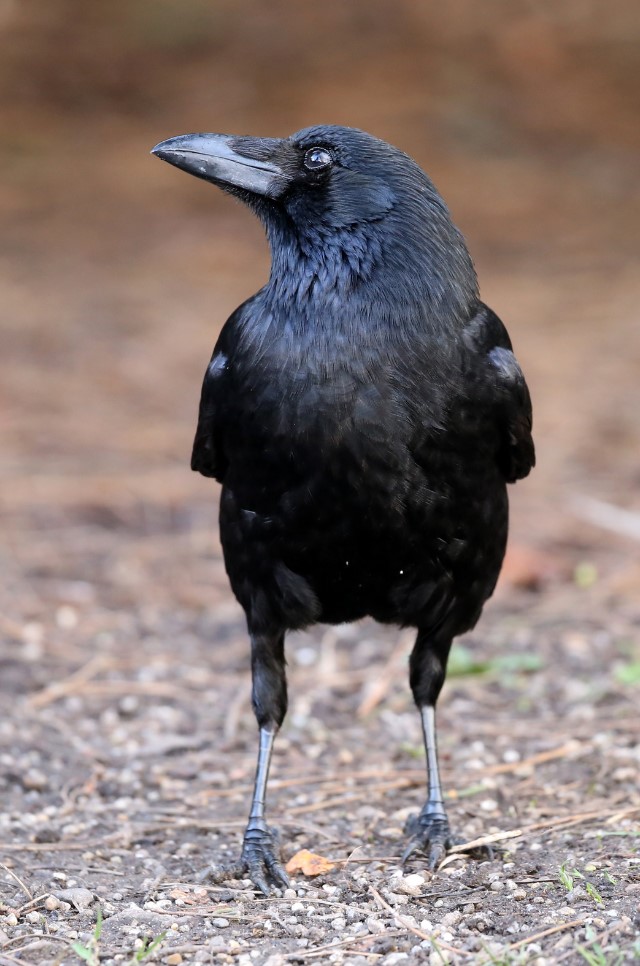
Anatomy Of A Crow: Features And Characteristics
A crow, scientifically known as Corvus brachyrhynchos, is a fascinating bird species found worldwide in various habitats ranging from forests to urban areas. Although they may appear similar to other black birds, such as ravens or blackbirds, there are distinct features and characteristics unique to crows. Let’s delve into the anatomy of a crow and examine its interesting features.
Body Structure: A crow’s body structure consists of a robust, black-feathered body with short, broad rounded wings that allow for quick and agile movements in the air. Besides, their feet are powerful, with sharp talons that enable them to perch on branches and vertical surfaces. Their beak is also distinctive, curved, and pointed, making it efficient for foraging and scavenging.
Brainpower: Crows possess advanced cognitive abilities that make them stand out from other bird species. Their brains are large in proportion to their body size, and studies have found that they have high intelligence, problem-solving and tool-use skills, and memory. They can also recognize human faces and make complex social connections.
| Feature | Characteristic |
|---|---|
| Caw | A distinctive and recognizable vocalization sound made by crows. |
| Plumage | A glossy black or blackish-brown set of feathers, with an iridescent shine in the sunlight. |
| Tail | Long and fan-shaped with a rounded tip that allows for easy steering during flight. |
Physical Features: The plumage of a crow is sleek, high-keyed, and uniquely glossy. It contains black to blackish-brown feathers that shine with an iridescent hue in the sunlight. The feathers on its throat and breast have a rounded shape, which are fluffier than those on their wings and tail. Crows also have a fan-shaped tail with a rounded tip, allowing them to fly with ease and provides efficient steering.
This bird species has an incredible combination of intelligence, physical, and social capabilities, making them a remarkable addition to the natural world. Knowing the anatomy of a crow and its features and characteristics can help bird enthusiasts to identify and appreciate them more effectively.
Types Of Crows: American, European, And More
Crows are one of the most interesting birds in the world. There are several types of crows found throughout the world. These types of crows differ in their size, color, and distribution. In this blog post, we will discuss some of the most common types of crows found in America and Europe, and other parts of the world.
- American Crow: The American Crow is one of the most well-known types of crows in America. It is black in color, and its size is slightly larger than the European crow. American Crows are found throughout North America, including Canada, the United States, and Mexico. They are omnivores and feed on insects, fruits, seeds, and small animals.
- European Crow: The European Crow is smaller than the American crow and weighs about 16 ounces. It is black in color, with a distinctive white area on its throat. This type of crow is found in many parts of Europe, Asia, and Africa. Similar to the American Crow, the European Crow is an omnivore and feeds on a variety of food sources.
- Jungle Crow: The Jungle Crow is found in Asia and is similar in appearance to the American Crow. Its size and weight are similar to the American Crow, and it is also an omnivore. The Jungle Crow feeds on insects, fruits, seeds, and small animals. It is known for being more aggressive than other types of crows.
The above list is not exhaustive, and there are many other types of crows found throughout the world. In addition to the ones mentioned above, some of the other types of crows include the Hooded Crow, the Carrion Crow, and the Rook.
| Type of Crow | Distribution | Appearance |
|---|---|---|
| American Crow | North America | Black in color, slightly larger than European Crow |
| European Crow | Europe, Asia, and Africa | Black in color, with a white area on its throat |
| Jungle Crow | Asia | Black in color, similar in size to American crow |
All types of crows have some similarities in terms of behavior and characteristics. Crows are known for being social birds and can be found in flocks. They are also intelligent and adaptable, which allows them to survive in various environments. Crows are also known for their vocalizations, including their distinctive “caws” and “croaks”.
In conclusion, crows are fascinating birds found throughout the world. Different types of crows have their unique characteristics in terms of size, color, distribution, and behavior. Learning about these different types of crows can give us a greater appreciation for the natural world and the diversity of life that surrounds us.
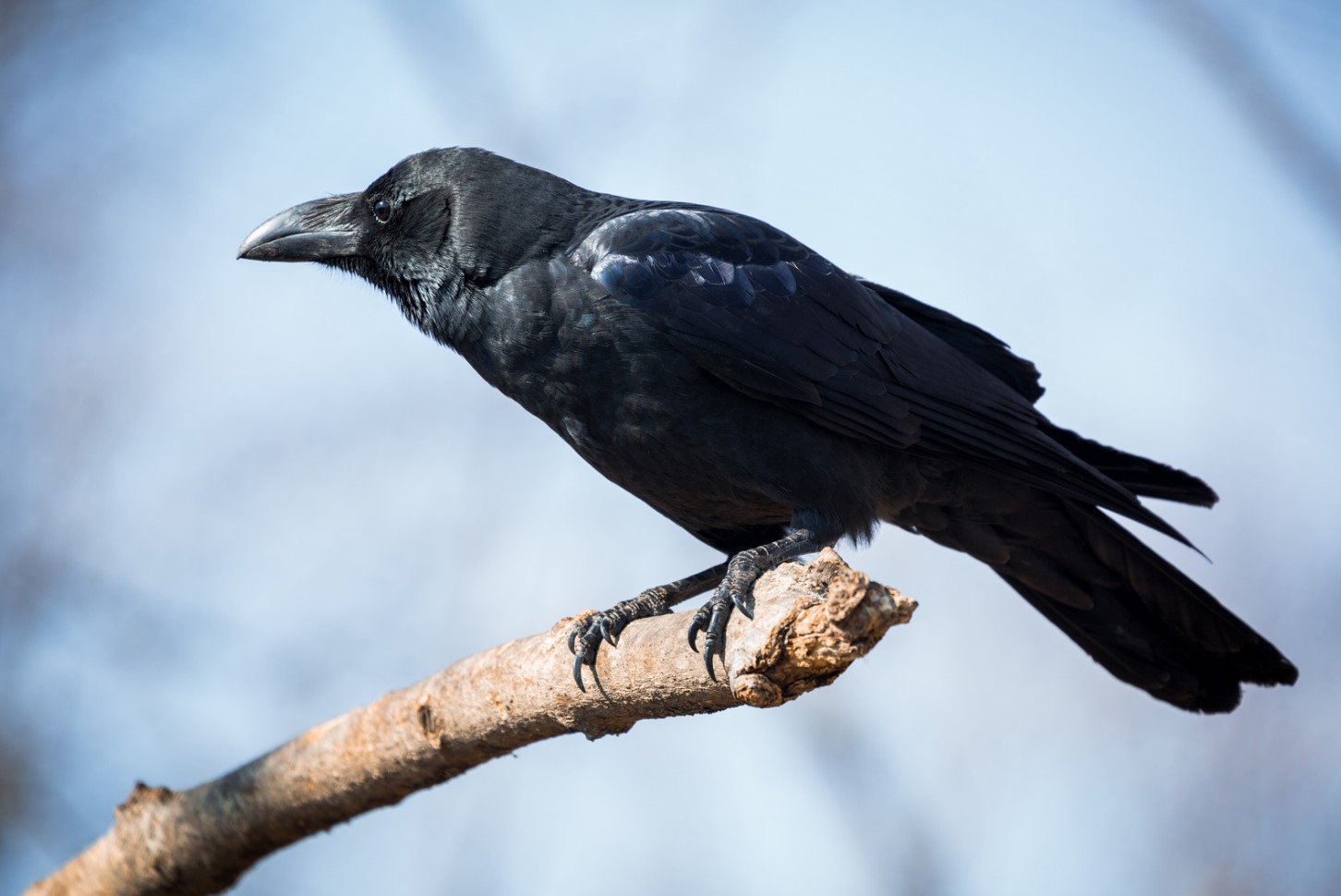
Crow Calls And Communication Methods
The sound of the crow is a familiar noise all across the world. Crows are known for their distinctive cawing sound which can be heard emitting from trees or rooftops. However, one of the most interesting things about crows is how they communicate with each other. They have a complex language and are able to convey a great deal of information through various sounds and body language. Let’s take a closer look at the communication methods of crows.
Crow Calls: Crows communicate with each other using a variety of calls. The most common call is the caw, which can mean anything from a simple greeting to a territory warning. Crows also make a range of other noises such as grunts, rattles, clicks, and whistles. Each of these sounds has its own meaning and is used in different situations. For example, a rattle call can be used to scare away predators, while a click call can signal a food source.
- Crow Body Language: In addition to calls, crows also use body language to communicate with each other. They can posture themselves in a way that shows dominance or submission, which can help them maintain their position in a flock. They also use their wings and tail feathers to signal danger or excitement. For example, if a crow is alarmed, it will raise its wings to make itself appear larger and more intimidating.
| Crow Communication in Flocks: | Crow Communication with Family Members: |
|---|---|
| Crows also communicate with each other in larger flocks. They use calls and body language to coordinate group activities like foraging, mating, and migration. They also form strong family bonds and can recognize the calls of their relatives. | Young crows learn their vocalizations from their parents and older siblings. They may also practice their calls with other young crows in the flock. This communication is important for survival, as it helps warn the group of danger or alert them to food sources. |
In conclusion, crows are highly intelligent birds with a complex system of communication. They use a variety of calls and body language to convey important information to other members of their flock. Their ability to communicate is one of the reasons why they are such successful birds and have been able to thrive in many different environments all over the world.
Habitat And Diet Of Crows
Crows are one of the most adaptable species of bird found worldwide. They can be seen in almost all habitats, ranging from dense forests to urban landscapes. Most species live in large, extended family groups, which occupy specific territories. The habitat of crows varies by species, but they are generally found in temperate and tropical climates.
One of the fascinating aspects of crows is their diet. They are omnivores, which means they eat both plants and animals. Crows primarily feed on insects, fruits, nuts, and seeds. They also consume small vertebrates like frogs, lizards, and rodents. Interestingly, crows have a unique ability to adjust their diet according to their habitat and seasonal availability of food.
- In urban areas, crows feed on food scraps, garbage, and carrion.
- In the countryside, they forage for insects and small animals in meadows and fields.
- In coastal regions, crows feed on shellfish, fish, and other marine creatures.
Crows are also known to be intelligent scavengers. They often follow other predators to feed on the leftover carcasses of their prey. Additionally, they can remember the location of food sources and hide surplus food for future use.
| Types of Food Consumed By Crows | Habitat |
|---|---|
| Insects, Nuts, Berries, and Seeds | Forests |
| Small Vertebrates, Reptiles, and Amphibians | Countryside |
| Shellfish, Fish, and Carrion | Coastal |
| Food Scraps and Garbage | Urban Areas |
Crows play an important role in maintaining a balanced ecosystem. They help control the population of various insect and rodent species. However, human activities like urbanization, agriculture, and deforestation have negatively affected the habitat and diet of crows. This has led to a decrease in their population and the loss of biodiversity. It is crucial to conserve the habitat of these birds and ensure the sustainable use of natural resources.
In conclusion, crows are a fascinating bird species that display remarkable adaptability and intelligence. They have a diverse diet and can thrive in various habitats. Conservation efforts are vital to ensure the long-term survival of these birds in a rapidly changing world.
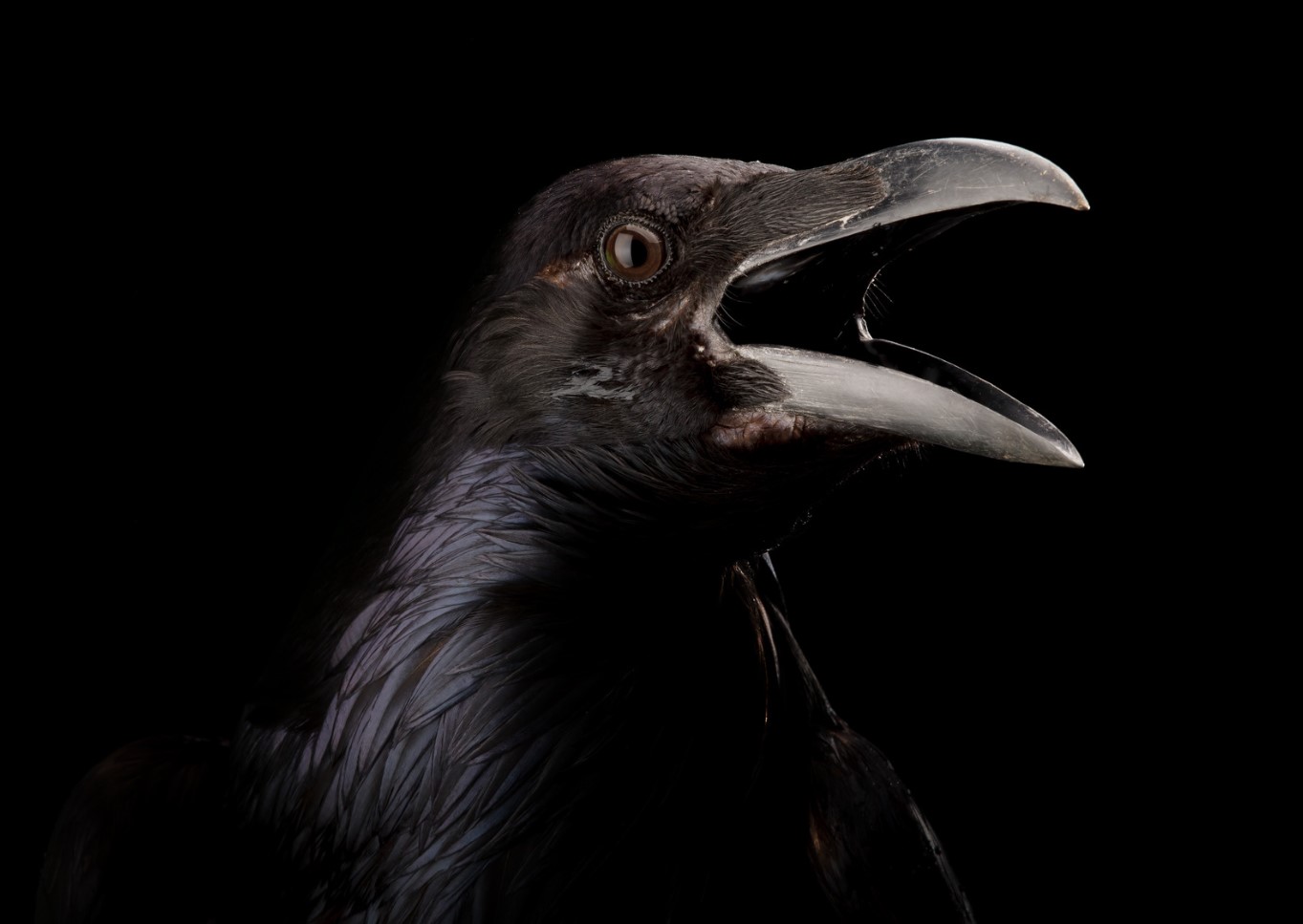
Crow Behavior: Social, Intelligent, And Adaptive
Crow Behavior: Social, Intelligent, And Adaptive
Crows, also known as Corvus, are one of the most intelligent birds in the world. They are members of the crow family, Corvidae, which also includes ravens, magpies, and jays. Crows are found worldwide and are known for their distinctive black feathers.
Crows are highly social birds and often gather in large groups called murders. They have a complex social hierarchy and communication system, using a range of vocalizations and body language to communicate with one another. Crows have been observed engaging in a range of behaviors, including cooperative foraging, play, and tool use.
Studies have shown that crows are capable of solving complex problems and using tools to achieve their goals. They have been observed using sticks to extract insects from tree bark, dropping objects onto hard surfaces to break them open, and even using cars to crack nuts. Researchers believe that crows may have some of the highest problem-solving and tool usage skills of any non-human animal.
- Crow Intelligence:
Crows are highly intelligent animals and are known for their problem-solving and tool usage skills. They are capable of learning and remembering faces, using tools to extract insects from tree bark, and even cracking nuts using cars. Researchers believe that crows may have some of the highest problem-solving and tool usage skills of any non-human animal.
- Crow Social Behavior:
Crows are highly social birds and often gather in large groups called murders. They have a complex social hierarchy and communication system, using a range of vocalizations and body language to communicate with one another. Crows have been observed engaging in a range of behaviors, including cooperative foraging, play, and tool use. Researchers believe that crows may have a greater capacity for social learning and communication than other birds.
| Crow Behavior | Description |
|---|---|
| Adaptive | Crows are able to adapt to their environment and thrive in a variety of habitats. |
| Playful | Crows have been observed engaging in playful behaviors, including sliding down snow-covered roofs and playing with objects. |
| Cooperative | Crows have been observed engaging in cooperative behaviors, including mobbing predators and sharing food. |
Crows are fascinating birds with a range of interesting behaviors. Their intelligence, social behavior, and adaptability make them a unique and important part of the natural world.
Crow Predators: Natural And Man-Made Dangers
Crows are among the most versatile and intelligent birds on the planet, but they also face a number of dangers in their daily lives. This blog post will focus on the natural and man-made predators that threaten crow populations around the world. By understanding these dangers, we can better appreciate the resilience of these incredible birds and the challenges they face in the modern world.
- Natural predators: Crows have a number of natural predators in their ecosystems, including birds of prey like hawks, owls, and eagles. These raptors hunt crows for food, using their sharp talons and beaks to capture and kill them in mid-air or on the ground. Other animals that prey on crows include foxes, raccoons, snakes, and even domestic cats and dogs. In many cases, crows are able to avoid these predators through their agility and intelligence, using their keen senses and quick reflexes to evade danger.
- Man-made dangers: Unfortunately, crows also face a range of man-made threats that are far more difficult to avoid. For example, many crows are killed each year by cars and other vehicles, as they scavenge for food along roadsides and are hit by passing traffic. Crows are also vulnerable to poisoning from pesticides, which can contaminate their food sources and weaken their immune systems over time. In addition, crows are frequently targeted by humans, who see them as agricultural pests and shoot, trap or poison them in large numbers.
- Protecting crows: Despite these risks, there are a number of ways that we can help protect crow populations and improve their chances of survival in the wild. One key step is to reduce the use of pesticides and other toxins in our agricultural and urban environments, as these chemicals can have far-reaching effects on the entire ecosystem. We can also reduce the number of crows killed by vehicles by designing roads and highways with wildlife crossings and other protective measures. Finally, we can learn to coexist with crows and appreciate their many positive qualities, such as their intelligence, problem-solving skills, and social adaptability.
In conclusion, crows face a range of natural and man-made dangers in their daily lives, but they are also incredibly adaptive and resilient birds that have survived for millions of years in diverse ecosystems around the world. By understanding the challenges they face and taking steps to protect them, we can help ensure that these amazing creatures continue to thrive for generations to come.
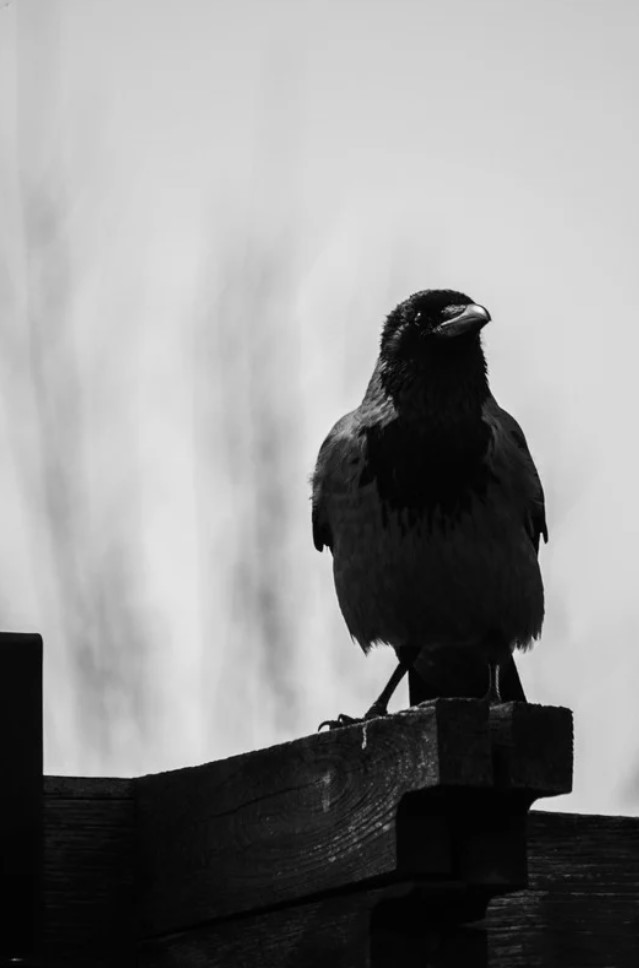
Crow İn Mythology, Folklore, And Literature
Crows have been an important symbol in mythology, folklore, and literature across cultures for centuries. These intelligent black birds have stirred the human imagination and have been associated with both good and bad fortune depending on different contexts. According to Norse mythology, two crows named Huginn and Muninn served as messengers of Odin, the god of wisdom and war. It is believed that these crows traveled the world during the day and returned to Odin in the evening to report what they had seen and heard.
The ancient Greeks, on the other hand, considered crows as bad omens, often warning of impending misfortune. In a famous Greek myth, Apollo sends a crow to watch over his lover Coronis. However, when the crow sees Coronis cheat on Apollo with a mortal man, it flies back to Apollo to report what it saw. In his rage, Apollo turns the crow’s feathers black and condemns it to an eternal life of associating with death and mourning.
- On the other hand, crows have also been depicted positively in mythology and folklore.
- In Chinese mythology, a crow was believed to have created the world by carrying mud or pebbles in its beak.
- In Hindu mythology, crows are viewed as ancestors who protect their descendants and guide them to safety.
- The Native American Crow Tribe saw the bird as a creator and valued its wisdom as it offered humans important insights into the natural world.
Crows have also been a subject of literature, often personifying human traits of intelligence, cunning, and adaptability. The most famous tale involving a crow is probably Aesop’s fable of the crow and the pitcher in which a thirsty crow successfully drops stones into a pitcher to raise the water level and quench its thirst.
| Mythology/ Folklore | Literature |
|---|---|
| Hindu mythology | The Crow – A Story of Love and Creation by Ted Hughes |
| Greek mythology | The Crow by John Ciardi |
| Native American Crow Tribe | The Crow and the Mouse by Leo Tolstoy |
Crows have also been associated with death and the afterlife in various cultures. In Irish folklore, crows were thought to carry the souls of the deceased to the underworld, while in Welsh mythology, crows were believed to be connected to the goddess of death, Morrigan.
In conclusion, crows have played a significant role in shaping ancient and modern culture. From mythology to literature, these black birds have fascinated and inspired humans for centuries. Whether they are portrayed as wise messengers or harbingers of misfortune, crows continue to captivate the human imagination.
Crow Symbolism: Death, Wisdom, And Omens
The crow is an intelligent, social bird that has been a common sight for centuries. However, beyond their physical presence, they hold symbolic significance in many cultures and beliefs. In this blog post, we will explore the various Crow Symbolism associated with them, including their connection to death, wisdom, and omens.
Death symbolism: Crows are often associated with death in many cultures. In some mythologies, they are seen as messengers of death, carrying the soul of the deceased to the afterlife. Their presence in cemeteries and their fondness for carrion further cements this association. In some Native American cultures, the crow is seen as a trickster figure that can bring death or new beginnings.
- In Hinduism, the sight of a crow or a group of crows is believed to be an omen of death.
- The ancient Greeks believed that the crow was the embodiment of the god Apollo and that their sudden appearance signified imminent death or disaster.
Wisdom Symbolism: Despite their association with death, crows are also revered for their perceived wisdom. In some cultures, the crow is seen as a symbol of prophecy and is believed to have the ability to foresee the future. They are also associated with knowledge and intelligence, as they can solve problems and use tools to accomplish tasks.
- In Chinese mythology, the Three-Legged Crow is a symbol of wisdom and a messenger of the sun god, urging people to seek knowledge.
- In Norse mythology, the god Odin was said to have two crows, Huginn and Muninn (meaning ‘thought’ and ‘memory’) which he sent out to gather knowledge and bring it back to him.
Omen Symbolism: Finally, crows are often viewed as omens, with their sight being seen as a sign of good or bad things to come. Their keen senses and intelligence make them excellent observers of their surroundings, and their cawing can be interpreted in many ways.
| Examples of Crow Omens: | Meaning: |
|---|---|
| A crow perched on a roof | Good luck is on the way. |
| A crow flying alone | Warning of danger or calamity. |
| Multiple crows flying together | A death is imminent. |
In conclusion, the Crow Symbolism is complex and varied, with different cultures and beliefs assigning different meanings to these birds. They are often associated with death, wisdom, and omens, among other things, and their presence can be interpreted in many ways. Regardless of their symbolic meaning, crows are fascinating creatures that have captured the imagination of people for centuries.
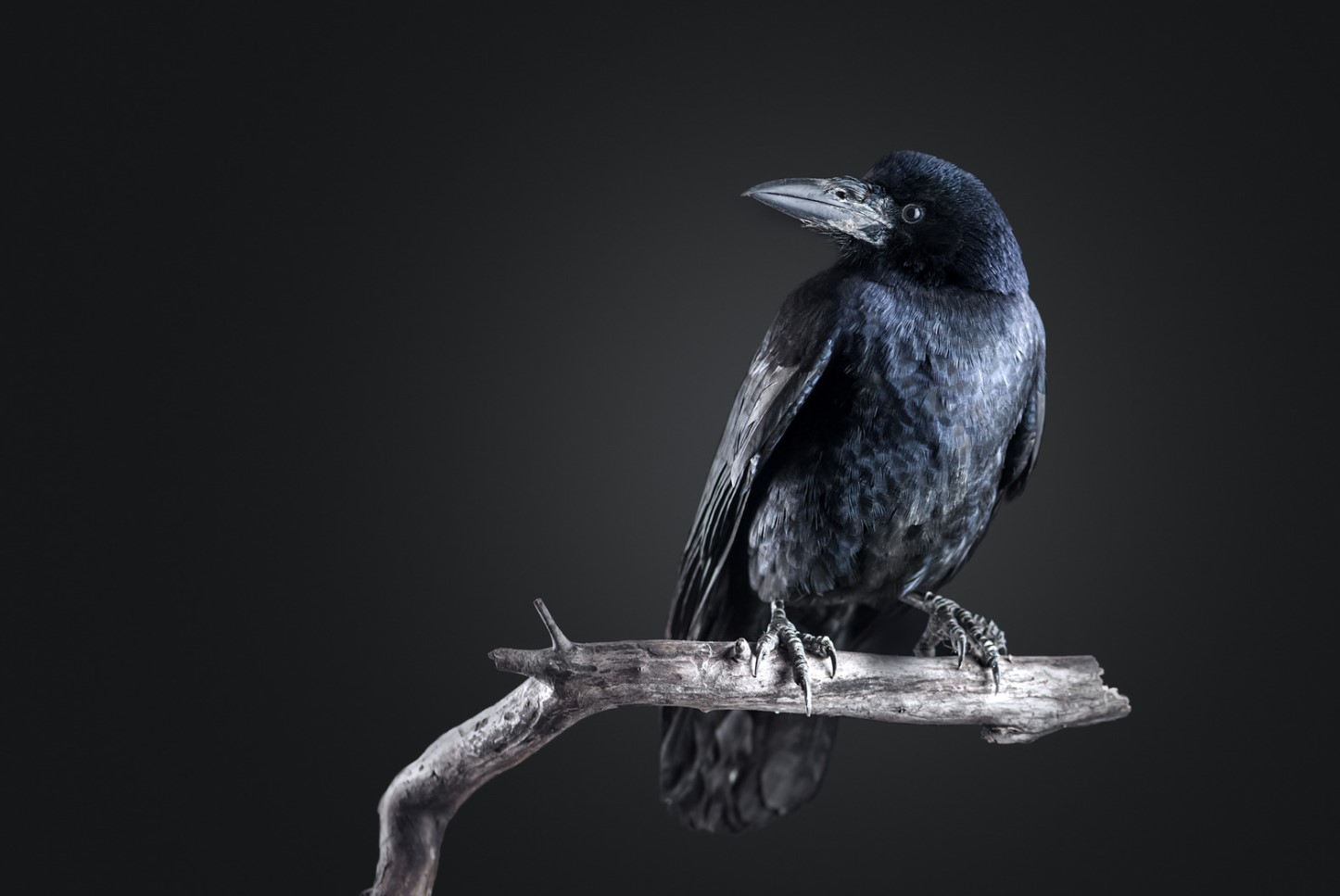
Crow Conservation Efforts And Threats To Population
Crows are a common bird species found worldwide, but their population has been facing threats upon threats in recent years. With habitat destruction, loss of nesting areas, and hunting practices becoming commonplace, the conservation of these birds has become a global concern. The need to protect the crow population has necessitated a call for concerted efforts toward conservation.
American crows, common ravens, and fish crows are among the most prominent members of the crow family in North America, and their decline has attracted the attention of conservationists. Birdwatchers, naturalists, and eco-friendly organizations have also contributed to raising awareness of the threats to the crow population. Crows are social and intelligent birds, capable of complex behavior, and their loss would have ripple effects on their ecosystems. This is why efforts to conserve them are all the more important.
Fortunately, concerted efforts toward conservation have gradually gathered momentum in recent years. Some means of conservation include the protection of nesting sites and planting native trees that attract crows to habitat restoration, avoidance of hunting practices, and reduction in the use of pesticides. Others include education and awareness campaigns to promote the coexistence of humans and crows. Although there is still much ground to cover in the conservation of crows, various initiatives have yielded promising results worldwide.
- Crow habitat destruction
- Loss of nesting areas
- Hunting practices
- Efforts to conserve crows
- Protection of nesting sites
- Planting native trees
- Avoidance of hunting practices
- Reduction in the use of pesticides
- Education and awareness campaigns
Crow Intelligence: Problem-Solving And Tool-Usage Skills
Crows are known for their intelligence and adaptability. In fact, studies have shown that these birds possess problem-solving and tool-usage skills that are comparable to those of primates. The intelligence of crows is evident in their ability to use tools to obtain food. For example, they have been observed using sticks to extract insects from crevices or using cars to crack open nuts. Their remarkable intelligence has made them a subject of fascination for scientists and bird enthusiasts alike.
One of the reasons for the crow’s intelligence is its highly developed brain. Crows have a much larger brain-to-body ratio compared to other birds, which may explain their advanced cognitive abilities. They are also highly social creatures and often communicate with each other through a variety of calls and body language. This social interaction may further enhance their cognitive development.
Crow intelligence has also been observed in their problem-solving abilities. In one study, crows were presented with a puzzle in which they had to extract a piece of food from a tube using a stick. The crows were able to solve the puzzle within seconds, showing their ability to learn by trial and error. They were also able to transfer this knowledge to a similar puzzle, demonstrating their ability to generalize their problem-solving skills.
- Crows are problem-solving birds that can use tools to obtain food
- They have a larger brain-to-body ratio compared to other birds
- Crows are highly social creatures and often communicate with each other through a variety of calls and body language
| Species | Distinct Features |
|---|---|
| American Crow | All-black with distinctive caw-like call |
| Hooded Crow | Gray neck and head with black feathers on wings and tail |
| Common Raven | Larger than crows with wedge-shaped tail and deep croaking call |
In addition to their problem-solving skills, crows have also demonstrated a form of cultural learning. They have been observed passing on knowledge and skills to younger generations, such as how to use tools or where to find food. This form of cultural transmission is rare in the animal kingdom and suggests that crows may have a level of cultural intelligence comparable to that of humans.
Overall, crows are truly remarkable birds that possess an extraordinary level of intelligence and adaptability. Their problem-solving and tool-usage skills are just some of the many reasons why they have captivated the attention of scientists and bird enthusiasts around the world.
Crow Vocalizations: Caws, Croaks, And Warns
Crows are perhaps some of the most intelligent and fascinating avian creatures around. They are recognized worldwide for their black feathers and raucous cawing, as well as their stunning aerial acrobatics. In this blog post, we will look at one particular aspect of crow behaviour that sets them apart from other birds: their unique vocalizations.
Crows have three primary types of calls: caws, croaks, and warns. The caw is perhaps the most recognizable call of the crow. It is a loud, harsh sound that can carry for long distances. Caws are often used to alert other crows of potential danger or to locate other members of a crow family. Interestingly, caws can also vary in tone and duration depending on the situation the crow is in.
Another type of call made by crows is the croak. Croaks are characterized by their deep and throaty sound, with a lower pitch than the caw. Croaks are usually used by crows to indicate aggression or fear, often accompanied by a puffed up posture and raised wings. Finally, the warn call is much quieter than the caw or croak, and often sounds like a soft “eh-eh.” Warn calls are typically used by crows to alert other members of their group of potential danger nearby.
- In conclusion, crows are fascinating creatures with a unique set of vocalizations. Caws, croaks, and warns are the three primary types of calls made by crows, each with its specific purpose. Understanding these vocalizations can help you understand the behaviors of these intelligent birds better.
| Crow Vocalization Types | Description |
|---|---|
| Caw | Loud and harsh, used to alert and communicate. |
| Croak | Deep and low-pitched, used to indicate aggression or fear. |
| Warn | Soft and quiet, used to alert others of potential danger nearby. |
Crow Migration And Seasonal Movements
Crows, found worldwide in different types and sizes, are known for their high intelligence and problem-solving skills. Not only are these birds intelligent, but they also have fascinating behavior patterns, including migration and seasonal movements. Crows are famous for flying long distances during migration, which is an essential part of their survival strategy. Let’s delve deeper into the details of Crow Migration and Seasonal Movements.
Migrations by Crows
Normally, crows move from their breeding grounds to their wintering areas to avoid harsh weather conditions. Some of these wintering destinations may be hundreds of miles away from their breeding places. During the migration, they sometimes form large groups, flying in circular patterns, while sometimes they fly solo or in smaller groups. In the United States, crows migrate primarily in the fall and late winter or early spring, depending on their breeding location. Similarly, crows in Europe also exhibit migration patterns, based on region and climate.
Seasonal Movements by Crows
In addition to their migrations, crows also demonstrate regular seasonal movements. These movements are not as prolonged as their migrations and happen within a particular region, depending on the season. For instance, crows move to higher elevations in mountainous areas during hotter months to find cooler temperatures and places that are optimal for their breeding. During winters, they move in search of food to urban and suburban areas instead of rural areas where food availability is scarce.
Conclusion
Crow Migration and Seasonal Movements are fascinating phenomena that signal the intelligence and adaptability of this species. Crows are proficient in their behavior patterns, allowing them to survive in different environments. However, climate change, habitat loss, and other forms of human expansion threaten the lives of crows and their ability to migrate and find suitable places to live. Therefore, it is essential to sustain the environments that support the existence of these remarkable birds.
Crow Populations Around The World
When we think of crows, we often picture the ones that hang around our neighborhoods and scavenge our trash cans for food. However, crows are much more than just backyard birds – they are found all over the world, from North America to Asia to Africa. The sheer variety of crow populations around the world is truly fascinating.
One of the most common and widespread types of crow is the American crow, which can be found from Canada all the way down to southern Mexico. These birds are highly adaptable and can thrive in a variety of habitats, from forests to urban areas to agricultural land. In fact, their populations have even been able to expand due to human development and the creation of new habitats for them to live in.
Across the Atlantic, we find the European crow, which is similar in appearance and behavior to the American crow but is found in different parts of the world. These birds are found in much of Europe and Asia, and there are even populations in North Africa and the Middle East. While they have historically been seen as pests and are sometimes hunted, they are also valued for their intelligence and are often featured in European folklore and literature.
- North America: American Crow
- Europe and Asia: European Crow
- North Africa and Middle East: European Crow
| Continent | Types of Crow |
|---|---|
| North America | American Crow |
| Europe and Asia | European Crow |
| Africa | Pied Crow |
| Australia and neighboring areas | Australian Raven, Torresian Crow |
In addition to these crows, there are also species like the pied crow of Africa and the Australian raven and Torresian crow of Australia and nearby islands. Some of these species have adapted to unique environments, such as the Australian raven’s ability to survive in the harsh, arid conditions of the Outback.
Despite their ubiquitous presence, many crow populations face threats such as habitat loss and persecution by humans. Some species have even been classified as endangered or near-threatened. However, thanks to their intelligence and adaptability, many populations have been able to bounce back and thrive even in the face of these challenges.
Overall, the diversity of crow populations around the world is a testament to the incredible adaptability of these fascinating birds.
Crow Control Strategies For Farmers, Gardeners, And Urban Areas
Crows are intelligent birds that can cause problems for farmers, gardeners, and urban areas. However, there are strategies that can be employed to control their behavior without resorting to harmful means.
- Use Scare Devices: Crows are easily frightened and can be scared away by loud noises, such as a scarecrow, wind chimes, flags, and balloons.
- Remove Food Sources: Crows are attracted to food, so it’s important to keep food sources, such as crops, garbage, and compost, covered and secured.
- Netting: Install bird netting over crops and fruit trees to prevent crows from accessing them.
In urban areas, crows can be a nuisance due to their noise and nesting habits. However, there are non-lethal methods to control their behavior:
- Trim Trees: Crows tend to nest in tall trees, so trimming branches can discourage them from settling in the area.
- Use Visual Deterrents: Urban areas can use reflective surfaces or predator decoys to scare off crows.
- Alter Lighting: Crows tend to avoid well-lit areas, so changing the lighting in urban areas can discourage them from congregating there.
It’s important to remember that crows are an important part of the ecosystem and should not be harmed unnecessarily. These strategies can help control their behavior while maintaining a healthy and balanced environment.